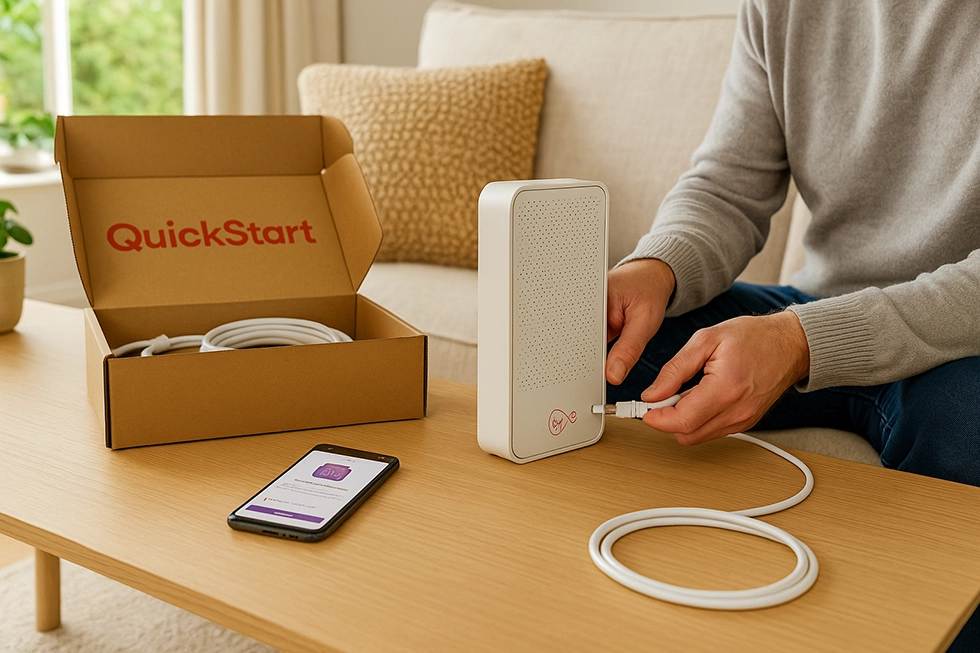Cellnex has activated the first fully consolidated 4G and 5G mast for Vodafone and Three’s merged mobile network. The site, located in Burnley, went live five months earlier than planned and marks the start of the physical integration phase of the new VodafoneThree network. Until now, most improvements seen by customers came from software-level changes such as spectrum sharing and roaming between both networks. The Burnley upgrade is the first sign of the deeper, long-term infrastructure changes that will follow across the country.

What the first consolidated mast actually means
When two mobile networks merge, one of the biggest challenges is removing duplicated infrastructure without reducing coverage. VodafoneThree’s short-term gains came from combining spectrum and switching on roaming between Vodafone and Three sites. That work gave customers access to a stronger mobile signal in many locations.
The Burnley mast is the first example of the next stage: taking two overlapping sites, modernising the equipment, and operating a single shared mast. By doing this, VodafoneThree can improve local 4G and 5G performance, cut running costs over time, and prepare the area for new features such as 5G Standalone.
How Cellnex rebuilt the Burnley site
The consolidation in Burnley involved a full refresh of the equipment on the mast. Cellnex replaced antennas and radio units so the site can carry both Vodafone and Three’s 4G and 5G signals without congestion. It also upgraded the baseband hardware, which manages the flow of data between the mast and the core network. This gives the site more bandwidth capacity, helping it perform well during busy periods when mobile demand peaks.
Cellnex operates as a neutral-host tower company, meaning its sites can support more than one mobile operator. This model helps reduce the number of individual masts needed across the country and makes large network upgrades easier to deliver.
Why this upgrade supports VodafoneThree’s long-term 5G plans
Vodafone and Three have committed to an £11bn investment programme to build out the UK’s 5G Standalone network. Burnley is one of the early sites linked to this plan. The company wants to reach 99% of the population with 5G Standalone by 2030, with near-universal coverage by 2034. This level of coverage will allow mobile networks to support faster speeds, lower latency and more capacity for home broadband over mobile, especially in areas with limited fixed-line options.
Consolidated mast sites help support these goals because each upgraded location can handle larger volumes of 5G traffic. The approach also reduces long-term costs, freeing up more investment for areas that still lack strong coverage.
Early improvements customers may already notice
Some improvements from the merger were visible even before the Burnley mast went live. Spectrum pooling and shared network access meant customers could automatically connect to whichever signal was stronger at their location. That led to better 4G speeds and fewer drops in coverage for many people, especially in towns where one network previously performed better than the other.
The Burnley upgrade builds on this by improving the radio network itself. It increases bandwidth capacity in the area and ensures 5G devices can connect to consistent high-speed service. Over time, more locations will follow the same path as Burnley.
The wider role of shared infrastructure in the UK’s mobile future
Working with companies like Cellnex allows mobile operators to deliver large upgrades more quickly. Tower companies handle the physical infrastructure, while the mobile networks focus on spectrum, technology upgrades and customer services. This model has become increasingly important as operators prepare for 5G Standalone, which requires modernised masts, new antennas and a more efficient nationwide network footprint.
Shared infrastructure also reduces the visual and environmental impact of maintaining thousands of separate masts. It can make it easier to expand coverage in difficult rural locations, because fewer sites need to be maintained and upgraded.
What happens next
The Burnley mast is expected to be the first of many. VodafoneThree and Cellnex will focus next on areas where both networks already have overlapping sites or where demand for mobile data regularly peaks. Upgrades will also target transport routes, towns with patchy coverage and regions where 5G Standalone can bring the most benefit.
As more sites are modernised, users should see stronger 4G and 5G performance, quicker response times and more consistent service in places that previously struggled. These improvements will arrive gradually, but the Burnley project shows the merged network is beginning to move from software upgrades to visible, on-the-ground infrastructure changes.
Key points to take away
- The consolidated 4G and 5G mast in Burnley is the first physical network integration project for VodafoneThree.
- Cellnex delivered the site ahead of schedule, upgrading antennas, radios and baseband hardware.
- The work supports the merged operator’s long-term 5G Standalone rollout and its wider investment plans.
- Customers in more areas should see performance improvements as further sites are consolidated in the coming years.
